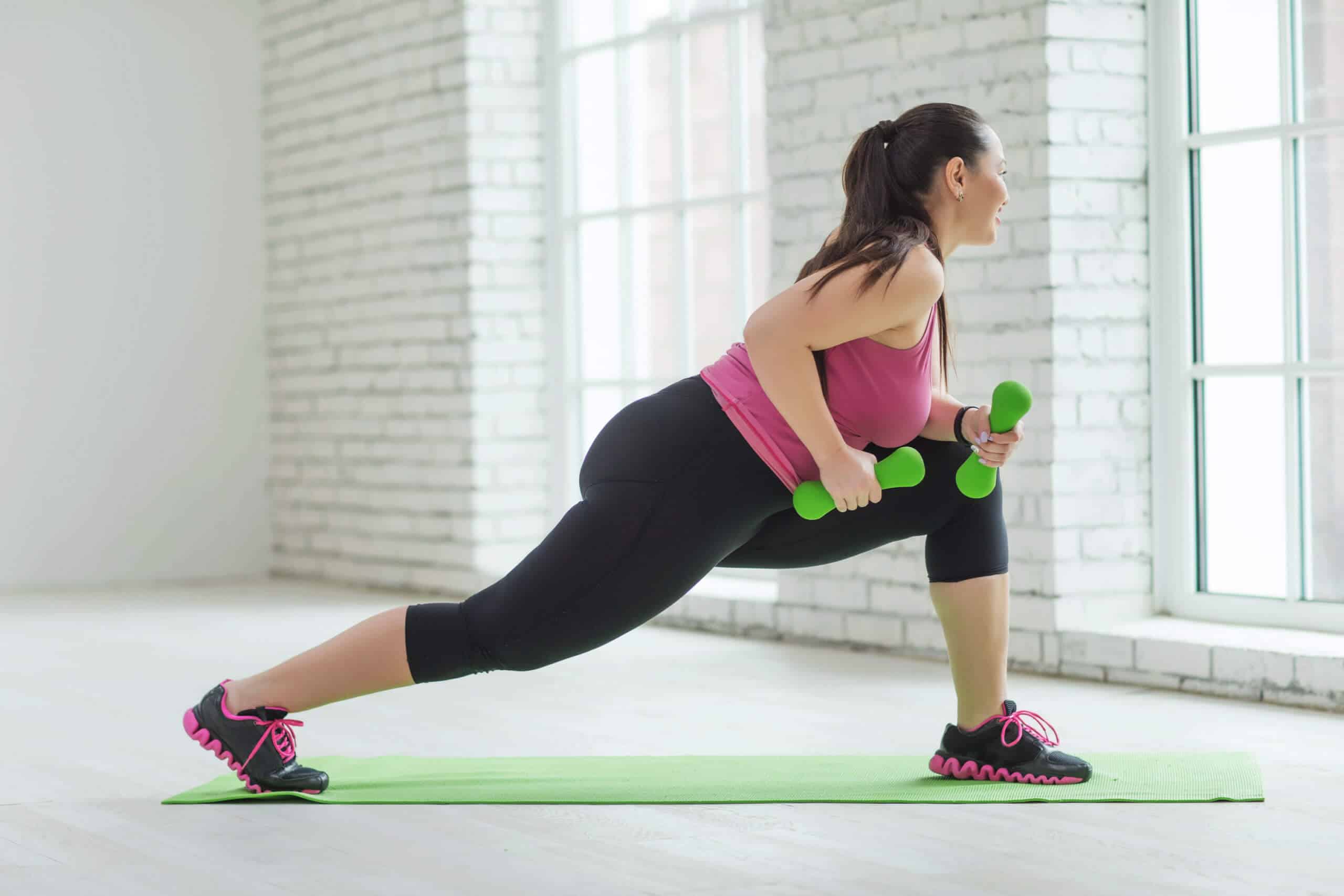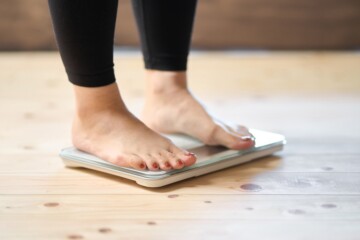Regular physical activity is one of the most important things you can do for your overall health; it has many positive effects on the body. But if you want to ease your PCOS (polycystic ovary syndrome) symptoms, you need targeted exercises. Exercises for PCOS certainly aren’t polarised into ‘right’ and ‘wrong’, but there are some exercises that’ll help you more than others. So what are the ‘best’ and ‘worst’ kinds of exercise for PCOS?
What is PCOS?
It helps to know exactly what PCOS is so that you can understand the science behind why some exercises will be better than others.
There are three things which are considered in the diagnosis of PCOS. If you have at least two of these, you’ll be diagnosed with PCOS:
- Polycystic ovaries – enlarged ovaries containing lots of follicles (fluid-filled sacs) that surround the eggs (but it’s important to note that if you don’t have any cysts you could still have PCOS)
- High levels of ‘male’ hormones in your body (excess androgens)
- Your ovaries do not regularly release eggs (ovulation) resulting in irregular periods
When you have PCOS an imbalance of reproductive hormones will cause a multitude of PCOS symptoms such as:
- Irregular or missed periods
- Infertility
- Weight gain
- Thinning hair
- Acne
- Excess hair on the face and chin
The exact cause of PCOS is unknown, but it’s related to abnormal hormone levels in the body, often including high levels of insulin. Insulin controls sugar levels in the body. As a PCOS sufferer, you’re likely to be resistant to insulin and so your body will produce higher levels of insulin to try to compensate. Being overweight also increases the amount of insulin in your body. This in turn leads to an increase in the production of hormones like testosterone.
How important is exercise for PCOS?
Regular exercise is essential for us all, it has numerous benefits for everyone, but it is especially important for those with PCOS. Those with PCOS have a higher risk of obesity and diabetes, due to the insulin resistance and it can be harder to lose weight. Some PCOS supplements are formulated specifically for women with a higher BMI in order to help them regulate weight and improve fertility, like Inofolic Alpha Plus. There is a correlation between a lack of physical activity and excessive body weight and both are potential contributing factors to insulin resistance. So exercise alongside a healthy diet will help you to lose weight. Another specific benefit is that exercise will also help to regulate your hormones and lower your testosterone levels. This will ease PCOS symptoms such as excess hair growth and acne. The benefits for PCOS sufferers include:
Balancing your hormones — exercising will help to lower oestrogen and insulin, and increase endorphins.
Improving your mood — PCOS sufferers can be more prone to depression as a result of hormone imbalances and PCOS symptoms. Regular exercise releases endorphins (happy hormones).
Improving autonomic function and inflammatory pattern — research has found that exercise training has been shown to improve autonomic function (which regulates involuntary body functions) as well as inflammatory patterns (most people with PCOS have elevated levels of chronic inflammation).
Aiding weight loss — trying to lose weight can be disheartening when you have PCOS. Daily exercise that you enjoy alongside a healthy eating plan will help you lose weight.
Improving your sleep quality — exercise can help you to sleep soundly. Those with PCOS are at a higher risk of sleep apnoea and snoring etc. These problems are also made worse by obesity.
Reducing your risk of diabetes — exercise such as cardio can improve your response to insulin.
Improving your mood — PCOS sufferers can be more prone to depression as a result of hormone imbalances and PCOS symptoms. Regular exercise releases endorphins (happy hormones).
Improving autonomic function and inflammatory pattern — research has found that exercise training has been shown to improve autonomic function (which regulates involuntary body functions) as well as inflammatory patterns (most people with PCOS have elevated levels of chronic inflammation).
Aiding weight loss — trying to lose weight can be disheartening when you have PCOS. Daily exercise that you enjoy alongside a healthy eating plan will help you lose weight.
Improving your sleep quality — exercise can help you to sleep soundly. Those with PCOS are at a higher risk of sleep apnoea and snoring etc. These problems are also made worse by obesity.
Reducing your risk of diabetes — exercise such as cardio can improve your response to insulin.
Helping to manage cholesterol — women with PCOS are more likely to have high cholesterol; exercising with a healthy diet can help to lower it.
Lowering risk of cardiovascular diseases — you are also more likely to have high blood pressure and cardiovascular diseases. Exercise will improve your heart health.
What is the best exercise for PCOS?
Steady-state cardiovascular workouts
Benefits: reducing insulin resistance, improving mood and helping weight loss
A steady-state cardiovascular workout is a workout where the intensity of the exercise stays within the same range for the duration of your workout. This can include things like walking, running, swimming, cycling and hiking. Just 30 minutes a day will help. As women with PCOS can be at higher risk of insulin resistance and weight gain, cardiovascular exercise is great. Cardiovascular exercise increases the body’s sensitivity to insulin and prevents the effects of cholesterol deposition in the arteries that can lead to high blood pressure, heart disease and type-2 diabetes. This type of exercise will also lift your mood and aid weight loss.
HIIT workouts
Benefits: burns fat, increases cardiovascular fitness
HIIT (high intensity interval training) is a combination of short, very-high intensity bursts of cardio exercise followed by the same period or longer of rest. For example, a minute of running, followed by a minute or two of jogging or walking. A HIIT workout would be doing this for 10 minutes.
Short cardio bursts in HIIT are fantastic for helping women with PCOS. The main advantage of HIIT is that you can boost your cardiovascular fitness faster by working harder instead of longer.
One study found that HIIT improves insulin resistance and aids fat burn. The HIIT creates an oxygen debt to your muscles which forces your body into excess post-exercise oxygen consumption (EPOC), aka afterburn. So even after your workout, your body is still burning fat.
Another study specifically looked at women with PCOS and found that HIIT for 10 weeks improved insulin resistance (without weight loss). And studies show that not only does HIIT improve insulin resistance but it also reduces excess testosterone, both of which can decrease the severity of PCOS symptoms.
Strength training
Benefits: increasing metabolic rate, reducing insulin resistance, increasing muscle and decreasing body fat
Strength training builds muscle by using your own body weight, resistance bands or weights. Research studying the different types of exercise interventions for PCOS investigated resistance training in women with PCOS and found that it was more effective for reducing Free Androgen Index (testosterone levels) than other types of exercise. Both ‘vigorous’ and ‘moderate’ intensities of strength training provided positive results and the more frequently you did the strength training the better.
Basic exercises like push-ups and tricep dips build muscle and upper body strength and improve insulin function while burning calories, even after you’ve finished the workout.
Mind-body exercises
Benefits: burning calories, relaxing mind and body and improving mood
Women with PCOS often become depressed, stressed and anxious as a result of their symptoms and one study found that women with PCOS who were overweight had a higher level of depression. Stress can also worsen other PCOS symptoms. Mind-body exercises like yoga, tai chi and pilates, can help to reduce stress and also burn calories, helping to aid weight loss (along with a healthy diet and regular cardio exercise).
What is the worst exercise for PCOS?
From initial research, there’s no one ‘worst’ form of exercise, but studies have found that over-exercising and over-training can make periods irregular due to a spike in cortisol levels which can put your hormones into disarray. Instead, you need to stick to an achievable exercise plan, including fun activities and classes which you enjoy, days of rest and gentle mind-body exercises. As always, this needs to be done alongside a diet full of whole foods, minimal sugar, healthy fats and low glycemic-index carbohydrates.
How often should you exercise with PCOS?
Exercising 30 minutes a day, three times a week, to three total hours per week can improve metabolic and reproductive symptoms associated with PCOS. And it’s really flexible, even a short walk is better than nothing.
Top tips for exercising with PCOS from the experts
Be consistent
The easiest way to stay consistent is to make exercise a part of your daily routine. It can be difficult to stick to thinking about exercising on your own. Try exercising with a friend who will help to motivate you. Perhaps you can do some exercise classes together — make sure you enjoy the exercise and want to do it — it helps if it’s fun. Just the act of going to meet the friend will help set a routine and push excuses to the side.
Focus on endurance
High intensity strength training can raise testosterone levels, which you don’t want if you have PCOS! Concentrate your resistance training on endurance by using lighter weights, persistence bands and body weight for a higher number of reps.
Prioritise HIIT over cardio
Whatever the intensity, exercise benefits women with PCOS. But HIIT appears to be a more beneficial exercise strategy for PCOS. Mix them up and try HIIT on a running machine (30 seconds running then 30 seconds walking).
Start slow
If you don’t think that you’re ‘sporty enough’ don’t worry, you don’t have to be. Ultimately you need to move more, so start by simply walking instead of driving, then build up gradually to a moderate exercise like swimming. If you’re self-conscious in the swimming pool or gym, stick to going for walks outside or buy some gym equipment for home.
Create a balanced routine
As mentioned above, high levels of intense exercise can develop menstrual cycle irregularities, so create a balanced exercise routine, with higher intensity days, lower intensity days and rest days. If you’re feeling PCOS fatigue, rather than avoid exercise, gentle exercise can often help to energise you.
Exercise can be a real turning point for women with PCOS. Aim for a mix of the best exercises for PCOS. As soon as you know how and why certain exercises help you it is a great motivator!
References:
Giallauria, F et al. 2008. Exercise training improves autonomic function and inflammatory pattern in women with polycystic ovary syndrome (PCOS). Clinical Endocrinology 2008;69(5):792‐8.
Karlsen, T et al. 2017. High Intensity Interval Training for Maximising Health Outcomes. Elsevier Inc.
Patten, Rhiannon et al. 2022 High-intensity training elicits greater improvements in cardio-metabolic and reproductive outcomes than moderate-intensity training in women with polycystic ovary syndrome: a randomised clinical trial. Published by Oxford University Press on behalf of European Society of Human Reproduction and Embryology.
National Institute of Diabetes and Digestive and Kidney Diseases
Sigal, Ronald J. 2017. Polycystic Ovary Syndrome and Exercise. University of Calgary








